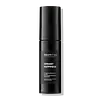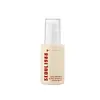What's inside
What's inside
 Key Ingredients
Key Ingredients

 Benefits
Benefits

 Concerns
Concerns

 Ingredients Side-by-side
Ingredients Side-by-side

Water
Skin ConditioningC13-15 Alkane
SolventPropylene Glycol
HumectantCaprylic/Capric Triglyceride
MaskingIsoamyl Laurate
EmollientCetearyl Olivate
Sorbitan Olivate
EmulsifyingPropanediol
SolventGlycerin
HumectantCyclodextrin
AbsorbentTocopheryl Acetate
AntioxidantSaccharide Isomerate
HumectantPanthenol
Skin ConditioningEctoin
Skin ConditioningRetinal
Skin ConditioningRubus Chamaemorus Seed Oil
Skin ConditioningPentylene Glycol
Skin ConditioningLonicera Japonica Flower Extract
Skin ConditioningLonicera Caprifolium Flower Extract
PerfumingHydroxyethyl Acrylate/Sodium Acryloyldimethyl Taurate Copolymer
Emulsion StabilisingLactic Acid
BufferingCitric Acid
BufferingSodium Citrate
BufferingDisodium EDTA
Sodium Levulinate
Skin ConditioningSodium Anisate
AntimicrobialWater, C13-15 Alkane, Propylene Glycol, Caprylic/Capric Triglyceride, Isoamyl Laurate, Cetearyl Olivate, Sorbitan Olivate, Propanediol, Glycerin, Cyclodextrin, Tocopheryl Acetate, Saccharide Isomerate, Panthenol, Ectoin, Retinal, Rubus Chamaemorus Seed Oil, Pentylene Glycol, Lonicera Japonica Flower Extract, Lonicera Caprifolium Flower Extract, Hydroxyethyl Acrylate/Sodium Acryloyldimethyl Taurate Copolymer, Lactic Acid, Citric Acid, Sodium Citrate, Disodium EDTA, Sodium Levulinate, Sodium Anisate
Panax Ginseng Root Extract
EmollientWater
Skin ConditioningGlycerin
HumectantDipropylene Glycol
HumectantCaprylic/Capric Triglyceride
Masking1,2-Hexanediol
Skin ConditioningNiacinamide
SmoothingButylene Glycol
HumectantMethyl Gluceth-20
HumectantPolyglyceryl-3 Methylglucose Distearate
EmulsifyingHydrogenated Lecithin
EmulsifyingSorbitan Stearate
EmulsifyingAmmonium Acryloyldimethyltaurate/Vp Copolymer
Macadamia Ternifolia Seed Oil
EmollientCarbomer
Emulsion StabilisingTromethamine
BufferingBetaine
HumectantTocopherol
AntioxidantEthylhexylglycerin
Skin ConditioningHelianthus Annuus Seed Oil
EmollientAdenosine
Skin ConditioningDisodium EDTA
Cholesterol
EmollientPolyglyceryl-10 Oleate
Skin ConditioningBrassica Campestris Sterols
EmollientPhytosteryl/Behenyl/Octyldodecyl Lauroyl Glutamate
Skin ConditioningRetinal
Skin ConditioningSilica
AbrasiveAluminum/Magnesium Hydroxide Stearate
Emulsion StabilisingPotassium Cetyl Phosphate
EmulsifyingPentaerythrityl Tetra-Di-T-Butyl Hydroxyhydrocinnamate
AntioxidantArctium Lappa Root Extract
Skin ConditioningCnidium Officinale Root Extract
Skin ConditioningDioscorea Japonica Root Extract
Skin ConditioningPaeonia Suffruticosa Root Extract
Skin ProtectingRehmannia Chinensis Root Extract
Skin Conditioning3-O-Ethyl Ascorbic Acid
Skin ConditioningBakuchiol
AntimicrobialSh-Oligopeptide-1
Skin ConditioningSh-Oligopeptide-2
Skin ConditioningSh-Polypeptide-1
Skin ConditioningPanax Ginseng Root Extract, Water, Glycerin, Dipropylene Glycol, Caprylic/Capric Triglyceride, 1,2-Hexanediol, Niacinamide, Butylene Glycol, Methyl Gluceth-20, Polyglyceryl-3 Methylglucose Distearate, Hydrogenated Lecithin, Sorbitan Stearate, Ammonium Acryloyldimethyltaurate/Vp Copolymer, Macadamia Ternifolia Seed Oil, Carbomer, Tromethamine, Betaine, Tocopherol, Ethylhexylglycerin, Helianthus Annuus Seed Oil, Adenosine, Disodium EDTA, Cholesterol, Polyglyceryl-10 Oleate, Brassica Campestris Sterols, Phytosteryl/Behenyl/Octyldodecyl Lauroyl Glutamate, Retinal, Silica, Aluminum/Magnesium Hydroxide Stearate, Potassium Cetyl Phosphate, Pentaerythrityl Tetra-Di-T-Butyl Hydroxyhydrocinnamate, Arctium Lappa Root Extract, Cnidium Officinale Root Extract, Dioscorea Japonica Root Extract, Paeonia Suffruticosa Root Extract, Rehmannia Chinensis Root Extract, 3-O-Ethyl Ascorbic Acid, Bakuchiol, Sh-Oligopeptide-1, Sh-Oligopeptide-2, Sh-Polypeptide-1
 Reviews
Reviews

Ingredients Explained
These ingredients are found in both products.
Ingredients higher up in an ingredient list are typically present in a larger amount.
This ingredient is an emollient, solvent, and texture enhancer. It is considered a skin-softener by helping the skin prevent moisture loss.
It helps thicken a product's formula and makes it easier to spread by dissolving clumping compounds.
Caprylic Triglyceride is made by combining glycerin with coconut oil, forming a clear liquid.
While there is an assumption Caprylic Triglyceride can clog pores due to it being derived from coconut oil, there is no research supporting this.
Learn more about Caprylic/Capric TriglycerideDisodium EDTA plays a role in making products more stable by aiding other preservatives.
It is a chelating agent, meaning it neutralizes metal ions that may be found in a product.
Disodium EDTA is a salt of edetic acid and is found to be safe in cosmetic ingredients.
Learn more about Disodium EDTAGlycerin is already naturally found in your skin. It helps moisturize and protect your skin.
A study from 2016 found glycerin to be more effective as a humectant than AHAs and hyaluronic acid.
As a humectant, it helps the skin stay hydrated by pulling moisture to your skin. The low molecular weight of glycerin allows it to pull moisture into the deeper layers of your skin.
Hydrated skin improves your skin barrier; Your skin barrier helps protect against irritants and bacteria.
Glycerin has also been found to have antimicrobial and antiviral properties. Due to these properties, glycerin is often used in wound and burn treatments.
In cosmetics, glycerin is usually derived from plants such as soybean or palm. However, it can also be sourced from animals, such as tallow or animal fat.
This ingredient is organic, colorless, odorless, and non-toxic.
Glycerin is the name for this ingredient in American English. British English uses Glycerol/Glycerine.
Learn more about GlycerinRetinal is a form of retinoid. Retinoids are the gold-standard class of anti-aging ingredients.
Retinal has many benefits as other retinoids: improve skin texture, reduce large pores, reduce the effects of aging, reduce the visibility of dark spots, heal scars, and fight acne.
Studies show retinal may work at a faster rate than retinol due to its structure.
All retinoids have to be converted into retinoic acid before starting to work. Some retinoids take several steps of conversion before binding. Retinal is only one step away, making it more potent.
Like other retinoids, retinal may be irritating. It is best to ease into using this ingredient frequently.
Using the 'ramp up' method, start by using retinol once a week. This gives your skin time to adjust and decrease irritation. Once you feel ready, you can slowly increase the frequency of retinol use.
Using retinoids will increase sun-sensitivity in the first few weeks of use. Though studies show retinoids increase your skin's natural SPF with continuous use, it is best to always wear sunscreen and sun-protection.
Learn more about RetinalWater. It's the most common cosmetic ingredient of all. You'll usually see it at the top of ingredient lists, meaning that it makes up the largest part of the product.
So why is it so popular? Water most often acts as a solvent - this means that it helps dissolve other ingredients into the formulation.
You'll also recognize water as that liquid we all need to stay alive. If you see this, drink a glass of water. Stay hydrated!
Learn more about Water